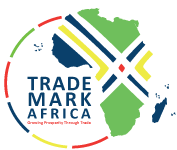British credit guarantee firm GuarantCo and risk venture fund InfraCo Africa have opened a regional office in Nairobi targeting new infrastructure deals in East and southern Africa. The two are part of the London-based multilateral Private Infrastructure Development Group (PIDG), which has been active in the region for over 15 years. PIDG established GuarantCo in 2006 with the aim of encouraging infrastructure development in low income countries, through credit guarantees that enable infrastructure projects to raise debt finance. In April last year, the firm announced its intention to spend Sh20 billion ($200 million) to guarantee local infrastructure financiers over the next three to five years. Local contractors have found it difficult to win big infrastructure tenders for lack of financial guarantees. The 300 megawatts Lake Turkana Wind Power project, for example almost stalled after the World Bank withdrew its guarantee, but later the African Development Bank stepped in to offer a partial guarantee for the deal. The Nairobi office is PIDG’s first in Africa and is expected to boost engagement with local markets, originate new deals and mobilise private capital. “This office demonstrates GuarantCo’s commitment to the region to catalyse the delivery and roll out of infrastructure projects and help support the development of the local capital markets to deliver solutions that benefit society,’ said Janice Kotut, GuarantCo regional director, East and Southern Africa. The local team is also expected to strengthen relations with regional partners as well as respond rapidly and flexibly to needs of existing project portfolios. The...
British firms target Nairobi contractors
Posted on: October 10, 2017
Posted on: October 10, 2017















